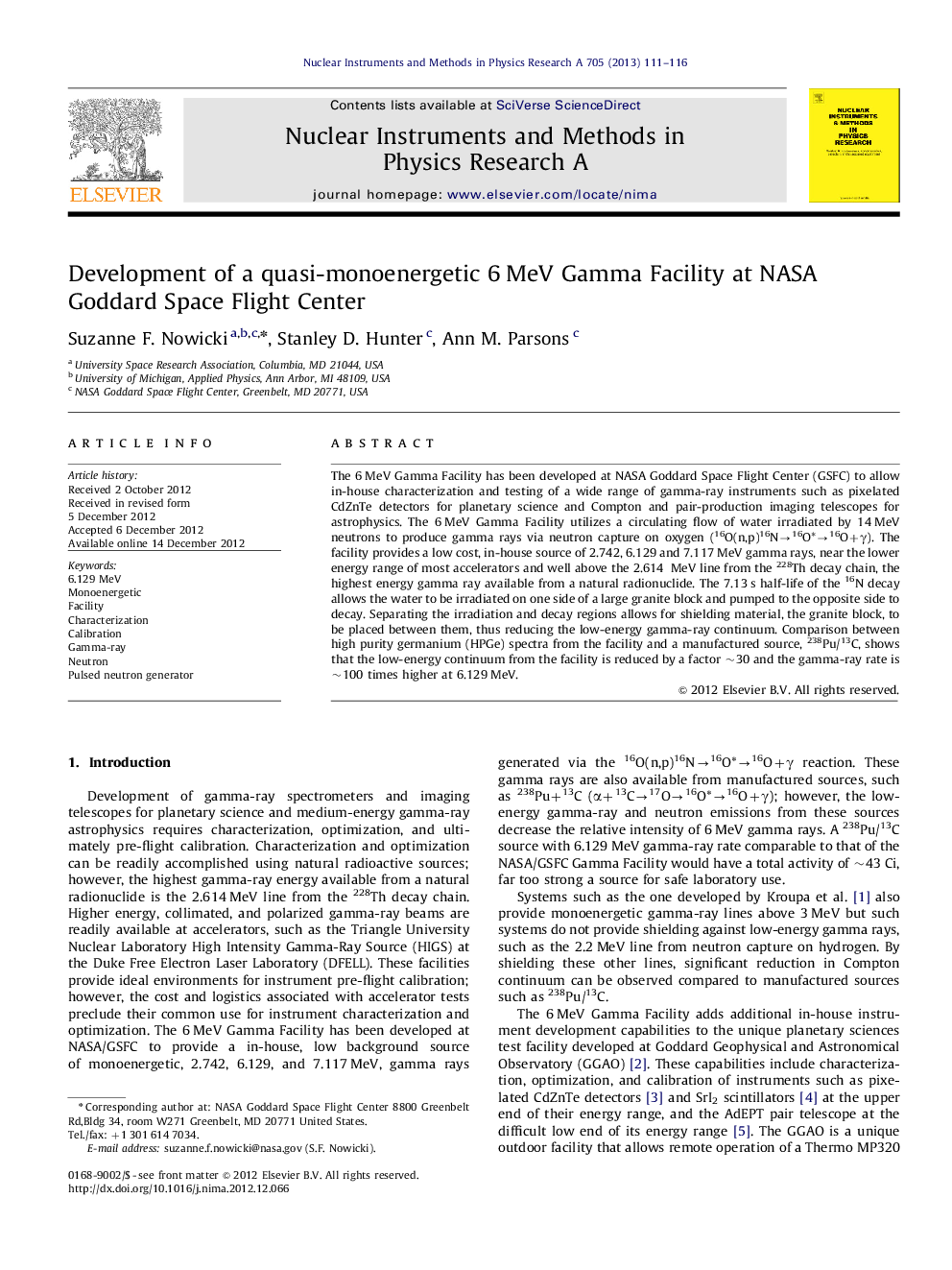| Article ID | Journal | Published Year | Pages | File Type |
|---|---|---|---|---|
| 8180173 | Nuclear Instruments and Methods in Physics Research Section A: Accelerators, Spectrometers, Detectors and Associated Equipment | 2013 | 6 Pages |
Abstract
The 6 MeV Gamma Facility has been developed at NASA Goddard Space Flight Center (GSFC) to allow in-house characterization and testing of a wide range of gamma-ray instruments such as pixelated CdZnTe detectors for planetary science and Compton and pair-production imaging telescopes for astrophysics. The 6 MeV Gamma Facility utilizes a circulating flow of water irradiated by 14 MeV neutrons to produce gamma rays via neutron capture on oxygen (16O(n,p)16Nâ16Oââ16O+γ). The facility provides a low cost, in-house source of 2.742, 6.129 and 7.117 MeV gamma rays, near the lower energy range of most accelerators and well above the 2.614  MeV line from the 228Th decay chain, the highest energy gamma ray available from a natural radionuclide. The 7.13 s half-life of the 16N decay allows the water to be irradiated on one side of a large granite block and pumped to the opposite side to decay. Separating the irradiation and decay regions allows for shielding material, the granite block, to be placed between them, thus reducing the low-energy gamma-ray continuum. Comparison between high purity germanium (HPGe) spectra from the facility and a manufactured source, 238Pu/13C, shows that the low-energy continuum from the facility is reduced by a factor â¼30 and the gamma-ray rate is â¼100 times higher at 6.129 MeV.
Related Topics
Physical Sciences and Engineering
Physics and Astronomy
Instrumentation
Authors
Suzanne F. Nowicki, Stanley D. Hunter, Ann M. Parsons,
